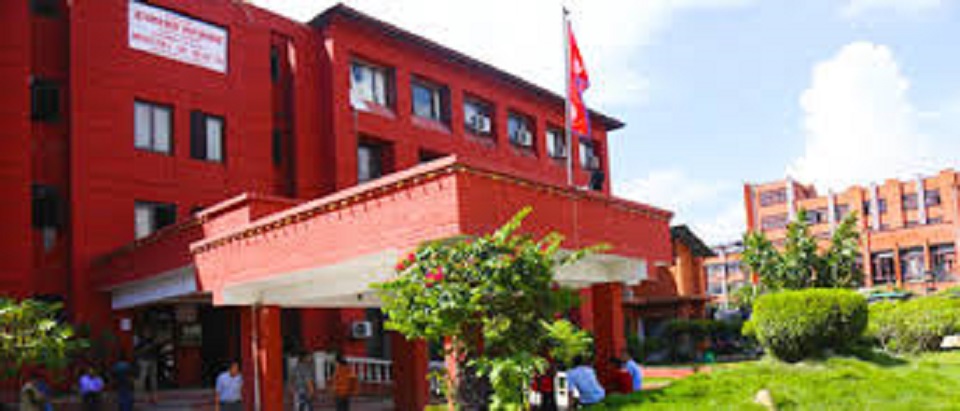
OR
Proposed changes in Medical Education Regulation draw flak as this disproportionately favors govt doctors to pursue MD courses
Published On: June 17, 2020 03:30 PM NPT By: Ashim Neupane | @ashimnep

Proposed regulation has allocated 50 percent quotas for government doctors
KATHMANDU, June 17: The Ministry of Health and Population (MoHP) is planning to endorse a controversial Medical Education Regulation that allocates 50 percent seats to the doctors working at the government-run hospitals to pursue doctor of medicine (MD) courses.
As the Regulation has already reached the cabinet for approval and is awaiting its nod, doctors working at the private hospitals have expressed serious dissatisfaction, terming the decision unfair and unjust to them. The proposed regulation has allocated 50 percent seats for government doctors, 40 percent seats in open competition, and 10 percent of foreign students.
This is against the proposal of the Medical Education Council to allocate 70 percent postgraduate seats for open competition, 20 percent for the doctors working at the government-run hospitals and remaining 10 percent for foreign medical students.
According to General Secretary of the Non-government Doctors’ Association Nepal (NGODAN) Dr Ritesh Thapa, the proposed regulation puts non-government doctors into complete injustice. “How can the ministry propose 50 percent seats for only 300 doctors working at the government-run hospitals?” questioned Thapa, adding that the number of non-government doctors is more than 8,000.
Dr Suman Acharya complained that these changes in the Medical Education Regulation are introduced at a time when the Public Service Commission’s examination for MBBS doctors has been halted for the last three years. “As the exam has been halted, the number of government doctors is only around 300. Is this proposed regulation justified for around 8,000 MBBS doctors working at various private hospitals in the country?” questioned Dr Acharya.
Around 2,000 MBBS doctors are produced in Nepal every year. “If the regulation is endorsed, almost all the government doctors will get opportunities to pursue postgraduate medicine degrees in Nepal. And the non-government doctors trying to study post-graduate will keep on increasing every year as they need to compete in extremely limited seats allocated to them,” Dr Acharya further said.
“There are almost 500 available seats for postgraduate medicine degrees in Nepal. Allocating 50 percent seats to those working at the government-run hospitals means that 250 seats are already reserved for them. In addition to this, the government doctors can also compete in the seats reserved for open competition. This means the number of non-government doctors getting seats for post graduate degree will be minimal,” added Dr Thapa.
Concerned over such a preparation of the government, representatives of non-government doctors are holding separate meetings with education and health ministers not to introduce such controversial provisions and deprive doctors working at private hospitals to pursue postgraduate medical degrees at home.
A source at the MoHP told Republica that the regulation sent by the Medical Council was revised to suit the interests of doctors working at the government hospitals as Health Minister Bhanu Bhakta Dhakal couldn’t withstand pressure exerted by the doctors working at the government-run hospitals. “The quotas should have been allocated in a scientific manner. The proposed regulation puts non-government doctors in a complete injustice,” said Dr Thapa.
The government has been running MD classes in Tribhuvan University Teaching Hospital, Patan Academy of Health Sciences, National Academy of Medical Sciences Bir Hospital, Pokhara Academy of Health Sciences, BP Koirala Institute of Health Sciences. These medical colleges offer almost 500 seats to pursue postgraduate medical degree.
You May Like This

NEB to publish Grade 12 results next week
KATHMANDU, July 26: The National Exam Board (NEB) has decided to publish the results of Grade 12 next week. The... Read More...

Body handover begins; Relatives remain dissatisfied with insurance, compensation amount
KATHMANDU, July 26: Family members have identified four of the victims of the recent Saurya Airlines plane crash. ... Read More...

134 dead in floods and landslides since onset of monsoon this year
KATHMANDU, July 26: As many as 134 people have lost their lives as of Thursday due to disaster-related incidents, including... Read More...






Just In
- Challenges Confronting the New Coalition
- NRB introduces cautiously flexible measures to address ongoing slowdown in various economic sectors
- Forced Covid-19 cremations: is it too late for redemption?
- NRB to provide collateral-free loans to foreign employment seekers
- NEB to publish Grade 12 results next week
- Body handover begins; Relatives remain dissatisfied with insurance, compensation amount
- NC defers its plan to join Koshi govt
- NRB to review microfinance loan interest rate











Leave A Comment